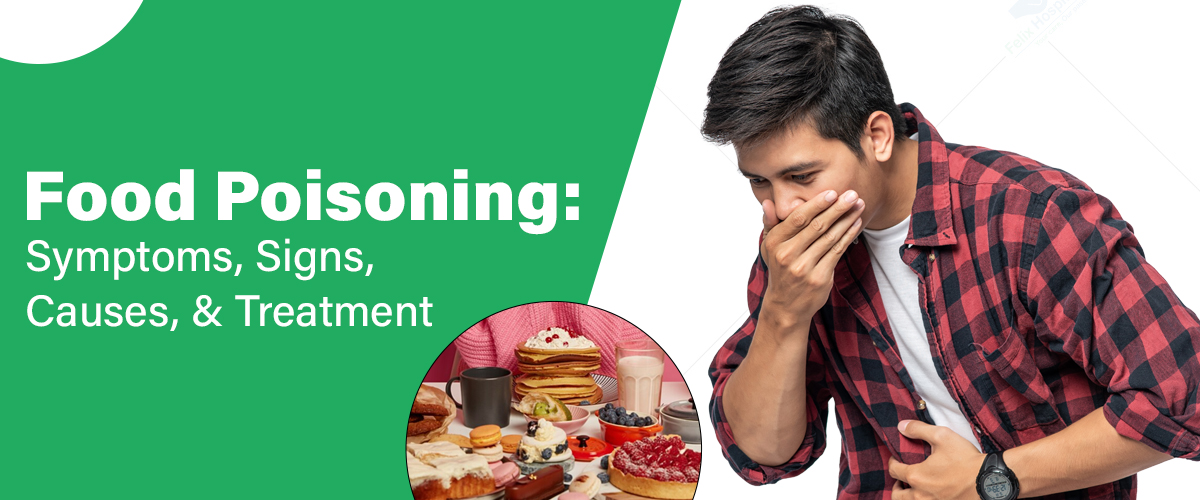Crepost Insights
Exploring the latest trends and stories in the world of news and information.
Food Poisoning: The Uninvited Dinner Guest Nobody Wants
Discover how to avoid the uninvited guest at your dinner table—food poisoning. Essential tips for safe eating await!
Understanding Food Poisoning: Symptoms, Causes, and Prevention
Understanding food poisoning is crucial for maintaining good health and preventing illness. It is caused by consuming contaminated food or beverages, which can lead to a variety of symptoms that may affect anyone. Common symptoms include nausea, vomiting, diarrhea, abdominal pain, and fever. The onset of these symptoms can vary from a few hours to several days after exposure, depending on the type of contaminant. Some of the most frequent causes of food poisoning include bacteria like Salmonella, E. coli, and Listeria, as well as viruses and parasites.
To effectively prevent food poisoning, it is essential to follow safe food handling practices. Here are some key tips to minimize the risk:
- Wash your hands frequently before and after handling food.
- Cook foods to the appropriate temperatures to kill harmful pathogens.
- Store food at safe temperatures to prevent bacterial growth.
- Avoid cross-contamination by using separate utensils for raw and cooked foods.
By being vigilant and taking the necessary precautions, you can greatly reduce your chances of experiencing food poisoning.

Top 10 Foods That Are Common Culprits of Food Poisoning
Food poisoning is a serious concern that can stem from consuming contaminated food. Understanding which foods are most often associated with foodborne illnesses can help you make safer choices. Here are the top 10 foods that are common culprits of food poisoning:
- Raw or undercooked meat and poultry
- Seafood, especially raw oysters
- Dairy products, particularly unpasteurized milk
- Eggs, especially raw or soft-boiled
- Fruits and vegetables contaminated with bacteria
- Processed foods with a long shelf life
- Grains that have been improperly stored
- Beans and legumes that are undercooked
- Prepared salads, such as potato or tuna salad
- Spices and herbs contaminated during processing
Each of these foods can harbor harmful pathogens that cause illness, such as Salmonella and E. coli. For instance, raw or undercooked meats can carry these bacteria, making it crucial to cook them thoroughly. Additionally, cross-contamination can occur when these foods come into contact with one another, which is why practicing good kitchen hygiene is essential. Be vigilant about food storage and preparation to mitigate the risks associated with these common culprits of food poisoning.
How to Safely Handle and Prepare Food to Avoid Food Poisoning
Food poisoning is a serious health concern that can arise from improper food handling and preparation. To reduce the risk, it's crucial to start with proper hygiene. Begin by washing your hands with soap and warm water for at least 20 seconds before and after handling food. Additionally, ensure that all cooking surfaces, utensils, and equipment are thoroughly cleaned and sanitized. Using separate cutting boards for raw meats and vegetables can also help prevent cross-contamination. Always check the expiration dates on food items and discard any that are past their prime.
When it comes to cooking food, temperature control is key to avoiding food poisoning. Use a food thermometer to ensure that meats reach the appropriate internal temperatures—165°F for poultry, 145°F for whole cuts of beef, pork, lamb, and veal, and 160°F for ground meats. Additionally, be mindful of the danger zone, which is between 40°F and 140°F; food should not be left in this temperature range for more than two hours to prevent bacterial growth. Finally, always store leftovers promptly in airtight containers and consume them within a few days to minimize risk.